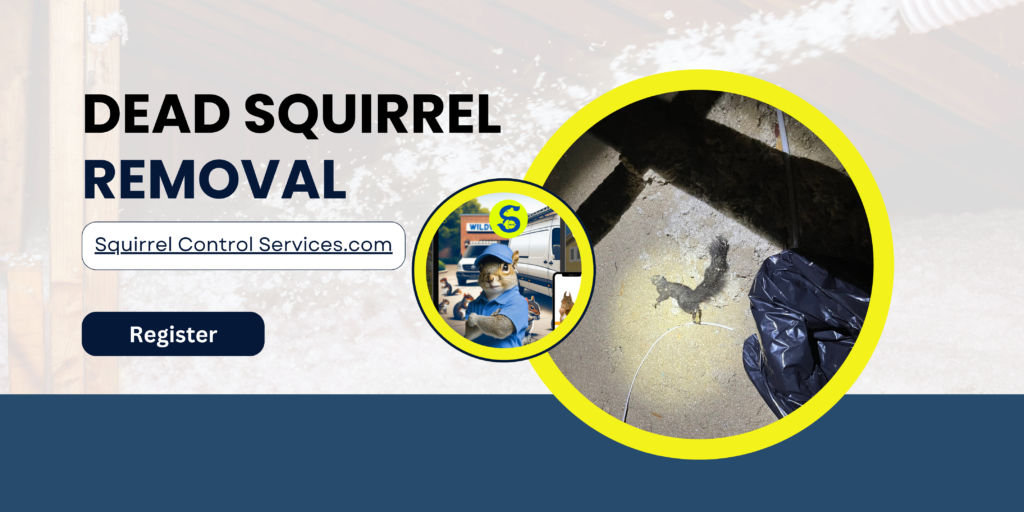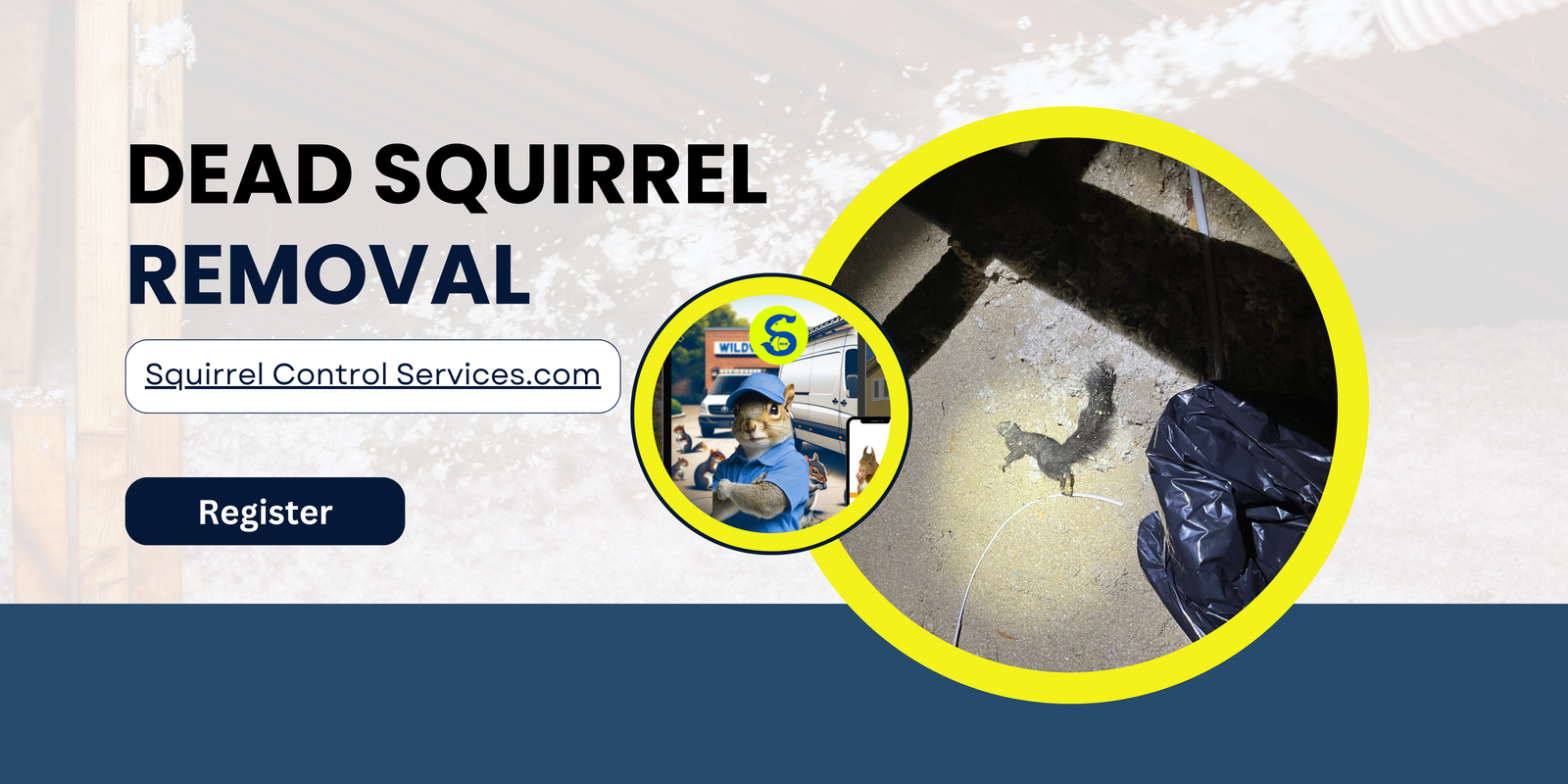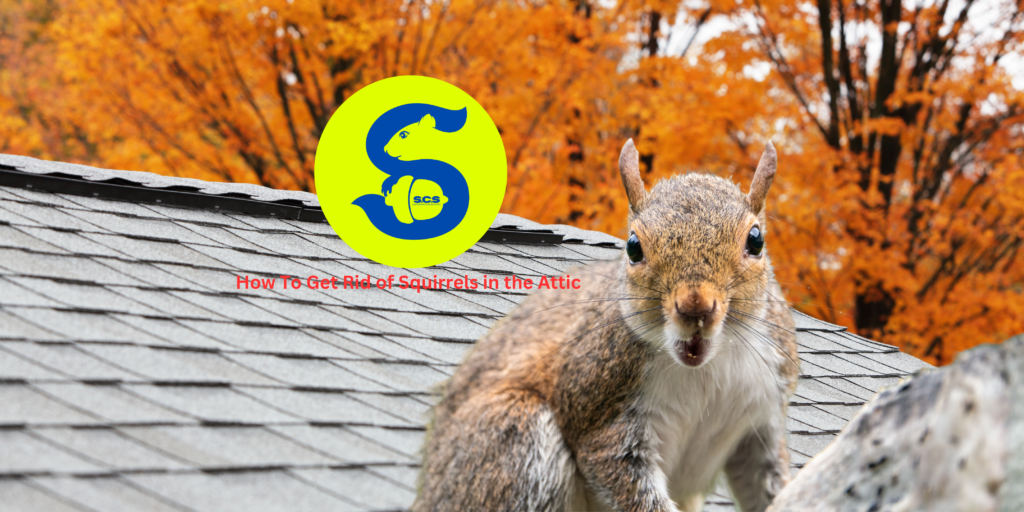What to Do With a Dead Squirrel in Your Attic
Finding a dead squirrel in your attic is an unpleasant and potentially hazardous situation that requires immediate attention. The presence of a deceased animal can lead to several issues, including foul odours, health risks, and the attraction of other pests. In this guide, we will provide you with comprehensive steps to take when you discover a dead squirrel in your attic, ensuring that the process is handled safely and efficiently.

Identifying the Problem: Signs of a Dead Squirrel in the Attic
Before discovering a dead squirrel, you might notice certain signs indicating its presence. These include:
- Foul Odour: A strong, unpleasant smell is often the first indication of a dead animal in the attic. The decomposition process produces gases that are hard to ignore.
- Increased Insect Activity: Flies and other insects may gather around the area where the squirrel is located, attracted by the scent of decay.
- Unusual Sounds: If the squirrel has been dead for some time, you may notice silence where there was once scratching or scurrying sounds.
- Stains on Ceilings or Walls: Decomposition fluids can seep through insulation and drywall, leading to unsightly and potentially harmful stains.

Health Risks Associated with a Dead Squirrel in the Attic
The presence of a dead squirrel in your attic poses several health risks that must be addressed:
- Bacterial Infections: Dead animals can harbor harmful bacteria that may lead to infections if humans come into contact with them.
- Parasites: Fleas, ticks, and mites from the deceased squirrel can infest your home, spreading diseases.
- Air Quality Issues: The gases released during decomposition can negatively affect the indoor air quality, potentially causing respiratory problems.
Step-by-Step Guide to Removing a Dead Squirrel
1. Prepare for Removal
Before attempting to remove the squirrel, gather the necessary protective gear to ensure your safety:
- Gloves: Use heavy-duty, disposable gloves to avoid direct contact with the animal.
- Mask: Wear a mask to protect yourself from inhaling harmful bacteria and odors.
- Plastic Bags: Have several large, sealable plastic bags ready for the disposal of the carcass and any contaminated materials.
2. Locate the Squirrel
Carefully inspect your attic to locate the dead squirrel. Pay attention to areas where the smell is strongest, as this will likely lead you to the source. Use a flashlight to check dark corners, insulation, and between beams.
3. Remove the Squirrel
Once located, carefully place the squirrel in a plastic bag. Avoid touching the animal directly, and double-bag the carcass to prevent leakage. Seal the bags tightly to contain any odors.
4. Dispose of the Squirrel
Disposal regulations for dead animals vary by location. Check with your local waste management services to determine the proper disposal method. Typically, dead animals can be disposed of with regular trash pickup, but some areas may require special handling.
5. Clean and Disinfect the Area
After removing the squirrel, thoroughly clean and disinfect the area where it was found. Use a mixture of bleach and water (1:10 ratio) to sanitize the space, ensuring all surfaces are cleaned to prevent the spread of bacteria and parasites.
6. Inspect for Damage and Entry Points
Squirrels often gain access to attics through small entry points. After removing the dead animal, inspect your attic for any signs of damage or potential entry points, such as holes in the roof, gaps in the soffit, or damaged vents. Seal these openings to prevent future infestations.

7. Consider Professional Help
If you are uncomfortable handling the removal process yourself or if the squirrel is in an inaccessible area, consider hiring a professional wildlife control service. Professionals have the experience and tools necessary to safely and effectively remove the animal and clean the area.
Preventing Future Incidents
To avoid finding yourself in a similar situation, take proactive steps to prevent squirrels from entering your attic:
- Seal Entry Points: Regularly inspect your home for potential entry points and seal them with durable materials such as metal flashing or hardware cloth.
- Trim Trees: Squirrels often access attics by jumping from nearby trees. Trim back any branches that overhang your roof to reduce this risk.
- Install Chimney Caps: If your home has a chimney, install a cap to prevent animals from entering.
Common Squirrel Entry Points in the Attic
- Holes in Roof
- Gaps in Soffit
- Damaged Vents
- Uncapped Chimneys
- Loose Siding
Conclusion
Finding a dead squirrel in your attic is a situation that requires prompt and careful attention. By following the steps outlined above, you can safely remove the animal, clean the affected area, and take measures to prevent future infestations. For those who prefer not to handle the situation themselves, professional wildlife control services are always an option, ensuring that your home remains safe and squirrel-free.



